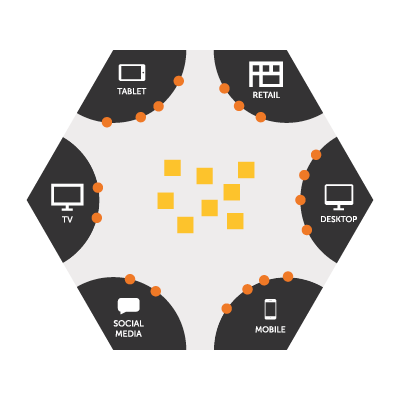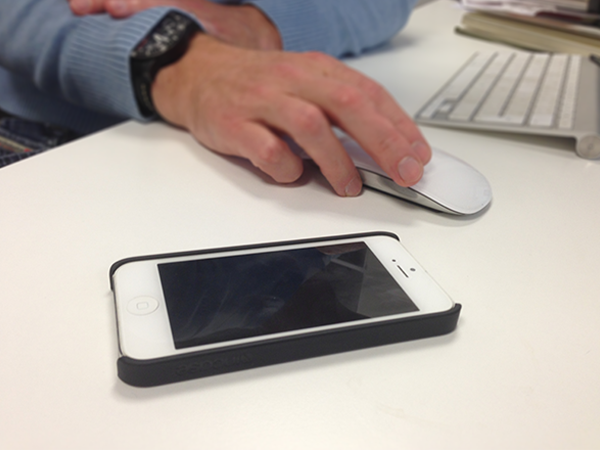
Figure 1: A picture of computer desk at home and at work.
The two scenarios shown above in Figure 1 have represented the common situations for using a computer and I suspect they will look very familiar to many people. We can no longer think of a computer as something that just sits on our desk at work or at home. There are computers all around us, literally. In fact, in most situations where there are groups of people there are likely to be more computers than people and this is only 2013. Imagine the situation in 2018 and beyond? We are now living with computers in a much more intimate way since the inception of Apple’s first generation smartphone back in 2007. In turn, such close and constant proximity has resulted in many interesting changes. Firstly, how we use computers. Secondly, the information we use them for. This article is a primer for people that want to gain an overview of cross-channel design. It will also address its impact on the ways we need to think and act in this new era where the digital-physical relationship is becoming increasingly blurred.
Cross-Channel Design
Cross-Channel Design represents a new paradigm within the discipline of Information Architecture (IA). It reflects the way we now consume and more importantly the considerations that need to be made when designing it. This new Cross-Channel IA is so much more than the site maps and navigation of its design cousin ‘classic IA’. I believe Cross-Channel Design will reignite a resurgence in IA as an interdisciplinary domain with equally as much importance as user experience. In fact, I believe they are both important in the design process and that is why anyone dealing with any type of digital experience, whether it be online or offline or both, needs to understand the implications of Cross-Channel Design.
So what is Cross-Channel Design?
A great explanation of Cross-Channel is provided in Andrea Resmini’s blog article What is Cross-Channel.
“Cross-Channel is not about technology, or marketing nor is it limited to media-related experiences: it’s a systemic change in the way we experience reality. The more the physical and digital become intertwined, the more designing successful Cross-Channel user experience becomes crucial.”
Cross-Channel focuses on the experience we have moving between channels when completing information tasks and activities. Let’s take a common everyday experience: banking. Many banks have designed a Cross-Channel experience that is not restricted to one type of technology (phone, computer, ATM, etc.) or situation of use (the home office or work office). We may start a banking task in one channel (smartphone) on our way to work in the morning, but not complete the task and therefore do more of the task at work using a completely different channel (desktop) before finally entering another channel (the physical branch on the high street). That’s three separate channel interactions. The journey may not end with the physical interaction in the branch because we may use another channel by making a call in the afternoon to check our activities on the way home prior to looking them up again whilst at home. This banking example reveals how we use multiple channels in multiple situations across time. The idea of completing any single task in a single channel is very simplistic. We are using multiple channels and therefore channel interactions, across longer time periods, sometimes for minutes and hours and other times for days and even longer, in multiple scenarios. Our interactions are more complex than at any previous point in our techno-history. One of the clarifications Andrea makes clear in his article is there is very little distinction between between services and products, if any. I agree with this distinction. Furthermore, I believe we need to think of the information space and channels as an ecology. This is a way to understand the ‘holistic‘ perspective and all the elements and potential channel interactions that can occur. The article goes on to further shape this definition of ecology by describing it as a ‘ubiquitous ecology’. This is a really nice way to conceptualise the Cross-Channel and it is one I wholeheartedly agree with. Therefore, a ubiquitous ecology represents the whole ecosystem and everything in it, including all the information; the users; the devices; and, the touch points and ultimately their interactions.
“A pervasive information architecture is the information layer that enables and connects all channels participating in a ubiquitous ecology.”
How is the Cross-Channel different?
Whilst we are used to operating across multiple channels e.g. we can access our bank accounts via a phone call; an ATM, the branch, the web or an app. All of these interactions represent multi-channel but it is how we use them and more importantly the “criss-crossing” we do. Compare this with a Cross-Media example where we might experience Batman as cartoon, comic, film, game or website. However, what makes Cross-Channel different is it allows people to change channels as they complete their task or activity. In a nutshell, a Cross-Channel experience needs to support criss crossing from channel to channel. A really good way to illustrate how the Cross-Channel operates is showing how the channels can be used to support a single user journey. I’ve taken Jon Fisher’s Cross-Channel IA diagram and represented it to support three different types of user journey:
- Retail experience (allowing people to browse and buy);
- Higher Education journey focused on supporting new applications;
- Charity journey focused on acquiring new monthly donors.

Figure 2: Retail experience.
Figure 2 shows six channels: tablet; physical (retail) store; desktop computer; mobile; social media or TV. All the channels provide access to information so a person can browse and buy. The yellow squares represent our information needs and the red dots the entry and exit points. Figure 2 is an example of an ecology. In this instance, an ecology for ‘browsing and buying’.

Figure 3: Higher Education journey focused on supporting new applications.
In figure 3 the channels include lecture; prospectus; open day; portal; social media and multi-channel (desktop, tablet and mobile). There are many means (channels) available to a prospective students considering applying to Higher Education. A prospective student will criss cross channels to decide where and what to study. Considering the choreography of the overall experience will result in a more joined-up Cross-Channel experience. The aim is to provide a whole experience that feels seamless whether your are browsing on your browser or visiting for an open day.

Figure 4: A charity journey focused on acquiring new monthly donors.
In figure 4 above we can observe the channels involved in supporting people giving to a charity. They include a physical store or shop; brochures or leaflets; call centers; the television; social media and multi-media (desktop computer; mobile and tablet). People can come into contact with the charity through a variety of channels and each one should support ‘giving’ or allowing people to donate. This may sound obvious but it’s not just the presence of the channels but how well they work together and support a potential donor moving from one channel to another.
Why is it important?
The amount of information is increasing and it is not looking like it will slow down any time soon. Marketeers, advertisers and businesses need to think about Cross-Channel Design and Experience because this is the reality they face: the world is different. Their customers’ interactions have to be considered holistically. It is not enough to think of our experiences as being on one device or another. They will also be on different devices in different situations occurring across different timelines that are both digital (online banking) and physical (banking at the branch). None of this should be a surprise because we have been doing these things offline (non-digitally) for a very long time, long before digital devices were part of our lives. The benefit of digital technology is that it has allowed us to blend our experiences together more closely with more connections and therefore allowing us to respond and/or act more quickly, synchronously and ubiquitously. It’s the same dance just with different choreography.
Being connected 24/7

Figure 5: My iPhone
My iPhone is pretty much with me 24/7. When it is not with me it is never far from my side. This represents a very different relationship and one I consider to be very modern. Interestingly, my iPhone will also reside on my desk too, a colleagues, on bedside cabinet. I’ve asked a lot of people recently about where they keep their phone and nearly everybody has stated that it is with them or very near to them all of the time.
21st Century Modern
This rapid explosion in devices, data and the sharing of information is our introduction to what I call the ‘21st Century Modern’ or the new world of unlimited information and therefore multiple channel access. We are all becoming information experts. So, the question we should all be asking is how can we successfully design for such staggering complexity and multi-situational-use? So, if you believe in the value of a customer-centric approach adopting Cross-Channel Design thinking and practices will help you get even closer to your customers. The benefits will include deeper and more authentic interactions. This is the way I approach the question of what is the Cross-Channel? So if you want to get closer to your customer and provide them with a great customer experience regardless of the channel or situation? Thinking and planning about how to design a truly great Cross-Channel experience will go along way to supporting that ambition. Welcome to the future.
We drive commercial value for our clients by creating experiences that engage and delight the people they touch.
Email us:
hello@nomensa.com
Call us:
+44 (0) 117 929 7333

